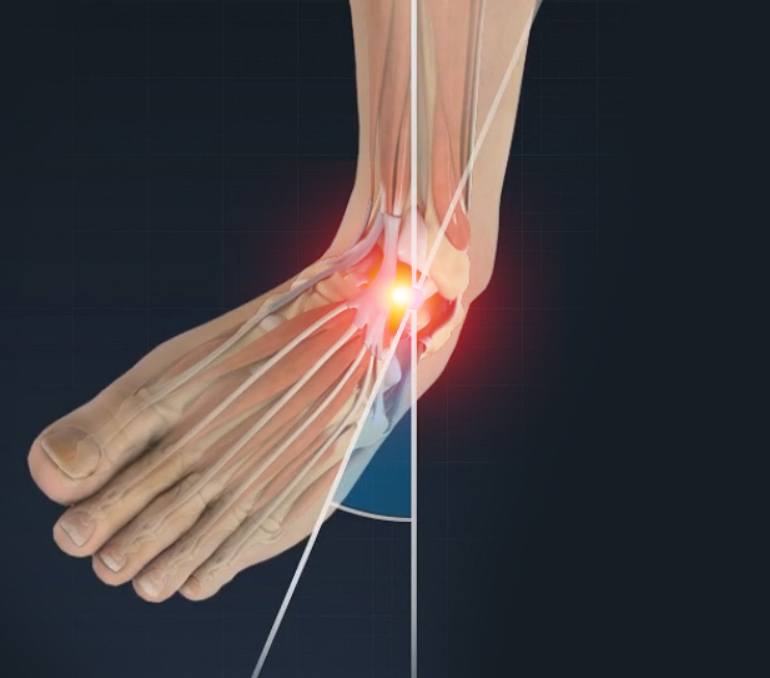
Ankle sprains are one of the most common injuries and affect people of all ages.
How does a sprained ankle injury happen? A sprained ankle occurs when you roll, twist, or turn your ankle in an awkward way. When you sprain your ankle, you stretch or tear the ligaments that help hold your ankle bones together. The injury itself can range from mild to severe, depending on how much damage there is to the ligaments. Recovery time varies depending on a lot of factors. However, the majority of ankle sprains are minor injuries that will heal with time and simple home treatments such as rest and ice.
Common Causes
Some of the common causes of ankle sprains are listed below:
- A slip or fall that causes your ankle to twist
- Landing awkwardly on your foot after moving, jumping, or pivoting during physical activity
- Walking, running, or working on uneven surfaces or poor field conditions
- Getting stepped on or landed on during a sports game
- Having a weak or unstable ankle from a previous injury
Symptoms
Everyone experiences a different range of symptoms when they sprain their ankle, depending on the severity of the injury.
Common symptoms include:
- Pain in the surrounding area
- Tenderness to the touch
- Swelling and bruising
- Restricted range of motion
- Instability in the ankle
Prevention
After you sprain your ankle once, you are more prone to sprain it again. Take note of these prevention tips to avoid a recurring ankle sprain.
- Always thoroughly warm up when you are exercising or playing sports
- If you’ve previously injured your ankle, consider wearing an ankle support brace or athletic tape on the weak ankle
- Wear proper shoes for activities
- Be careful on uneven surfaces, ankle sprains tend to happen in poor conditions
- Strengthen your muscles through various exercises and maintain good flexibility
Treatment
Treatment for sprained ankles depends on the severity of the injury. Some ankles injuries take longer than others to heal. Sometimes self-care measures and over-the-counter pain medications are all you need, however, If your ankle is swollen and painful to walk on for more than 72 hours, it’s time to see a doctor.
Many doctors recommend the R.I.C.E. approach for the first three days after obtaining an ankle sprain:
- Rest: Avoid physical activities that cause pain
- Ice: Ice your ankle for 15 to 20 minutes and repeat every two to three hours
- Compression: To help stop swelling, compress the ankle with a bandage to bring the swelling down
- Elevation: To reduce swelling, try to elevate your ankle, especially at night
At the Orthopedic Center of Palm Beach County, we have numerous doctors on staff that can treat your injury and rehabilitate you so that this doesn’t become a chronic injury. If you are experiencing pain, swelling, or discomfort after 72 hours, please call us at (561)967-6500 to make an appointment.





